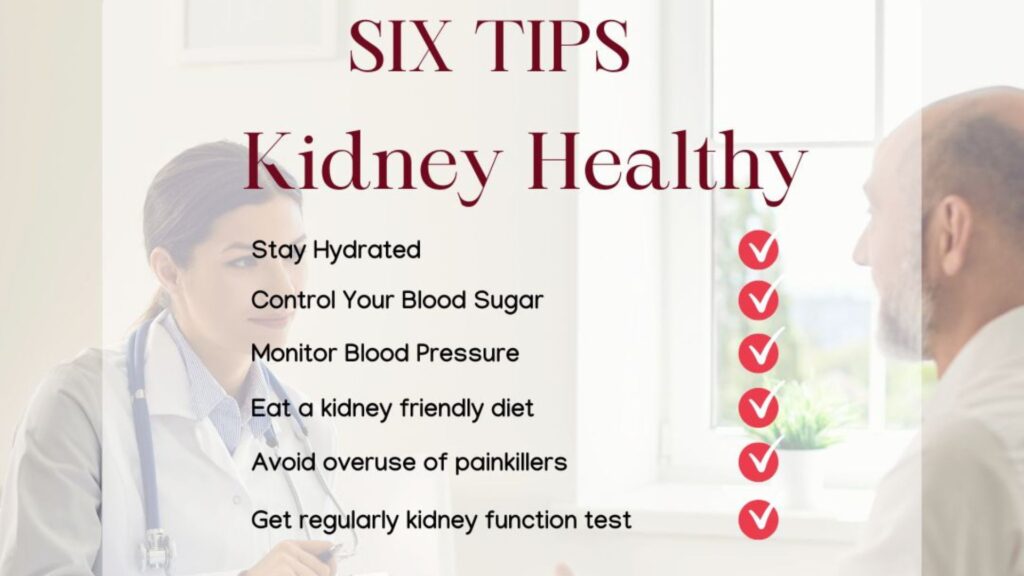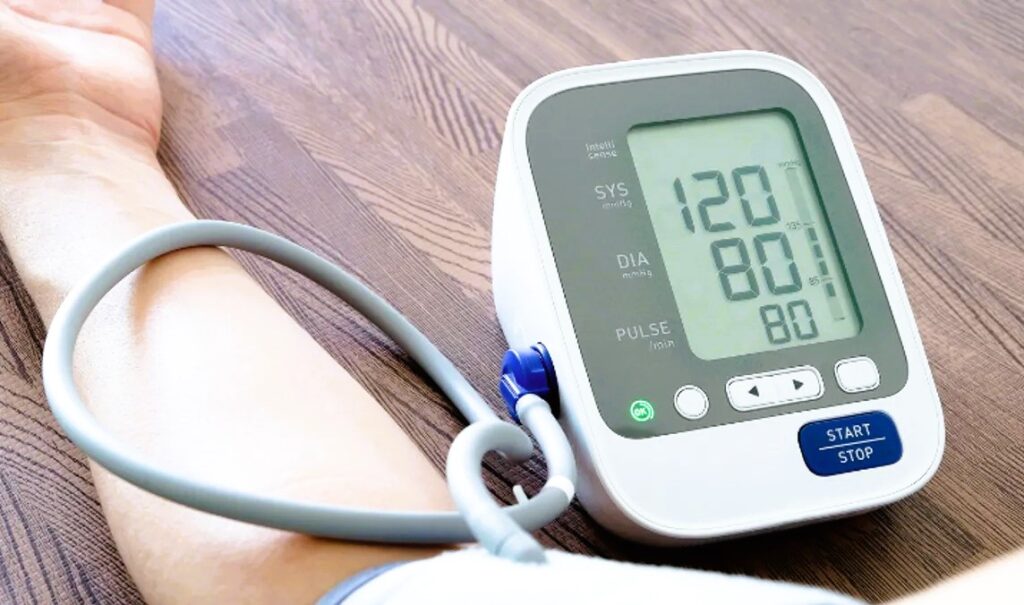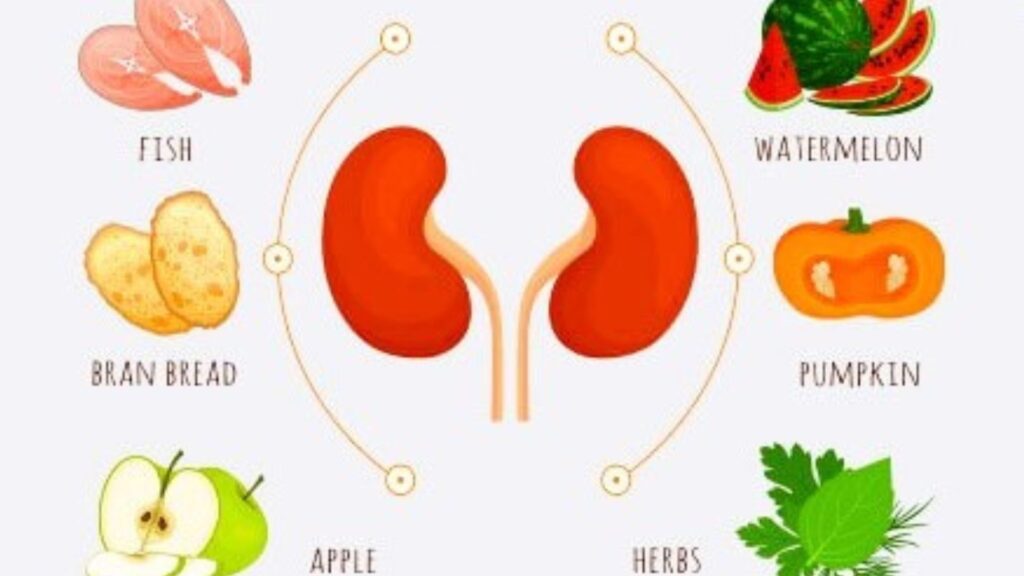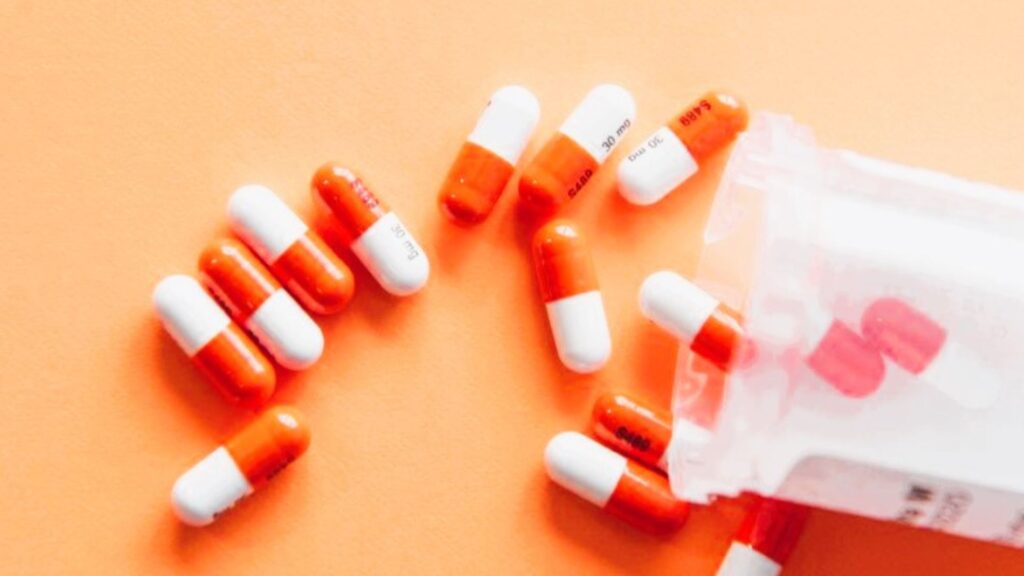Right now, inside your body, two powerful organs are working non stop—filtering your blood, balancing fluids, and quietly protecting you from toxins. These are your kidneys, and yet, most people don’t even think about them… until something goes wrong. The truth is, kidney disease doesn’t just affect older adults—it’s rising fast among people in their 20s and 30s. The scariest part? It can develop silently, with no symptoms, until it’s too late. But the good news? It’s preventable—and it starts with six simple, powerful choices you can make every single day.

1. Stay Hydrated
Imagine waking up one day feeling drained, sluggish, and unable to focus. You brush it off as stress or lack of sleep. But what if the real reason was something far more serious… something silent… something preventable? Your kidneys. These two fist-sized organs do the hard work of filtering nearly 50 gallons of blood every single day. And yet, most of us don’t even think about them—until it’s too late.
Hydration Matters for Your Kidneys
The scary part? Kidney disease often shows no symptoms until it’s advanced. One of the simplest, most powerful ways to protect them? Staying hydrated. Sounds basic, right? But here’s the thing—over 75% of Americans are chronically dehydrated. Especially young adults juggling school, work, and late nights. It’s easy to grab coffee, energy drinks, or soda… and forget water completely.
But dehydration is more than just dry skin or thirst. It’s a silent stressor on your kidneys. When you don’t drink enough water, your kidneys have to work harder to concentrate urine and flush out waste. This slowed-down filtration allows toxins and waste products to build up in your bloodstream. Over time, that constant stress damages your delicate kidney tissues—quietly, steadily. It’s like running a car engine without enough oil; eventually, components start to wear down.

Practical Steps for Better Hydration
So, how much water is enough? It’s a common question, and the answer can vary slightly based on activity level, climate, and individual health. However, the National Academies recommend around 3.7 liters (about 15.5 cups) of total fluid intake per day for men and 2.7 liters (about 11.5 cups) for women—this includes fluids from all beverages and foods combined. This might sound like a lot, but you don’t have to chug it all at once.
- Break it down: Start your day with a large glass of water. Think of it as kickstarting your kidneys for the day ahead.
- Keep it accessible: Keep a reusable water bottle on your desk, in your car, or in your bag. If it’s always within reach, you’re more likely to take sips throughout the day.
- Make it interesting: Water doesn’t have to be boring! Add slices of cucumber, lemon, lime, mint, or berries to infuse your water with natural flavor. Herbal teas (unsweetened) are also a great way to boost your fluid intake.
2. Control Blood Sugar
You feel fine. Maybe a little tired after meals, or a bit more thirsty than usual. You dismiss it, thinking you’re young, active—what could possibly be wrong? The truth? It might be your blood sugar—and your kidneys could already be paying a silent price.
The Silent Threat of High Blood Sugar
Right now in the U.S., over 1 in 3 adults has prediabetes, and astonishingly, most of them don’t even know it. This is a critical concern because prediabetes is a precursor to type 2 diabetes, a condition that can have devastating effects on multiple organ systems, including the kidneys. What’s even more shocking? High blood sugar is one of the leading causes of chronic kidney disease. This isn’t just an “older person’s problem” either. Damage can begin subtly in your 20s and 30s… quietly, without any noticeable symptoms.
Your kidneys are complex organs, each containing millions of tiny, intricate filtering units called nephrons. These nephrons are packed with even tinier blood vessels, which are incredibly delicate. Their job is to filter waste products and excess water from your blood. But when your blood sugar levels are constantly elevated—a consequence of too many sugary drinks, processed snacks, irregular meal patterns, or even chronic high-stress lifestyles—those delicate filters start to break down.
Taking Control of Your Blood Sugar
The good news is that you have significant control over your blood sugar levels. Small, smart changes in your daily habits can effectively protect your kidneys and stabilize your blood sugar for good.
- Rethink your carbs: Start by drastically cutting back on refined carbohydrates. This includes obvious culprits like white bread, pastries, sugary cereals, and sodas. Replace them with whole grains (like quinoa, brown rice, whole oats), fiber-rich vegetables (broccoli, leafy greens, bell peppers), and healthy fats (avocados, nuts, olive oil). Fiber slows down sugar absorption, preventing sharp blood sugar spikes.
- Spice it up naturally: Consider adding cinnamon to your oatmeal or smoothies; it’s been shown in some instances to help regulate glucose metabolism and improve insulin sensitivity.
- Smart snacking: Instead of reaching for candy bars or chips, opt for healthier snacks like a handful of almonds, a serving of Greek yogurt, or an apple with peanut butter. These choices provide sustained energy and help keep blood sugar steady.
- Don’t skip meals: Irregular eating patterns, especially skipping meals, can lead to severe blood sugar crashes, followed by compensatory binges. Every time you crash and then overeat, your blood sugar spikes dramatically, putting immense stress on your kidneys. Aim for consistent, balanced meals throughout the day.
3. Monitor Blood Pressure
You can’t feel it. You can’t see it. It rarely presents with obvious symptoms until it’s critically high. But high blood pressure—also known as the “silent killer”—could be silently damaging your kidneys every single day. This is particularly concerning for young adults who often feel invincible. You could be lifting weights at the gym, crushing your work goals, hanging out with friends—all while your kidneys are under constant, relentless attack.
How High Blood Pressure Harms Kidneys
Here’s what most people don’t realize: your kidneys are incredibly vascular organs, meaning they are full of tiny, delicate blood vessels. These vessels are essential for the kidneys to perform their primary function: filtering waste and toxins from your blood and maintaining your body’s fluid and electrolyte balance. This intricate network of vessels relies on steady, healthy blood flow at a normal pressure.
But when your blood pressure is consistently high, it’s like turning up the pressure on a garden hose. If you turn the spigot too high, the hose eventually wears out, weakens, and can even burst. The same principle applies to the delicate blood vessels within your kidneys. The constant excessive force of high blood pressure causes these vessels to stiffen, narrow, and become scarred over time. This damage reduces blood flow to the nephrons, impeding their ability to filter efficiently. Slowly but surely, the kidney function declines, often without any immediate warning signs.

Strategies for Managing Blood Pressure
The good news is that monitoring and managing your blood pressure is one of the easiest and most impactful things you can do for your kidney health, often right from the comfort of your home.
- Get a digital blood pressure monitor: These devices are affordable, readily available, and user-friendly. You only need to dedicate two minutes a few times a week to take your readings. Consistency is key.
- Keep a log: Maintain a simple log of your readings, noting the time of day. This helps you spot patterns and understand how various factors—like your sleep quality, stress levels, sodium intake, and physical activity—affect your numbers.
- Understand the connections: It’s all connected. Did you know that just one night of bad sleep can spike your blood pressure the next day? Similarly, chronic stress can keep your blood pressure elevated. Your kidneys are watching how all these elements interplay.
- Reduce sodium intake: This is one of the most effective dietary changes. Ditch highly processed foods like instant ramen, chips, frozen meals, and excessive restaurant food, which are often loaded with hidden sodium. Instead, flavor your home-cooked meals with garlic, lemon, herbs, and spices.
- Stay active: Regular physical activity, even moderate exercise like brisk walking for 30 minutes a day, most days of the week, significantly lowers blood pressure and improves overall circulation, easing the burden on your kidneys.
4. Eat a Kidney-Friendly Diet
Every time you eat, you’re making a choice. A choice that either actively protects your kidneys… or silently puts them at risk. And the truth? Your diet could be quietly damaging your kidneys—even if you feel perfectly healthy right now.
The Impact of Diet on Kidney Function
Your kidneys are like highly efficient, 24/7 detox machines. Their relentless job is to filter excess waste, control fluid balance, and keep your blood clean and optimally balanced. But what you choose to eat can either provide the essential fuel and nutrients they need to perform these vital functions, or it can overwhelm them with substances that lead to inflammation, damage, and ultimately, impaired function.
In the U.S., the typical Western diet is often high in elements that are detrimental to kidney health. Most people consume way too much sodium, excessive amounts of added sugar, and a high proportion of ultra-processed foods. Think about your daily intake of fast food, frozen meals, sugary sodas, and salty chips—it all adds up, placing an immense burden on your kidneys. Over time, this constant influx of challenging substances forces your kidneys to work harder and faster than they were designed to, leading to chronic inflammation, scarring of delicate kidney tissue, and eventually, irreversible damage.

Building a Kidney-Friendly Plate
So, what does a truly kidney-friendly diet actually look like? It’s not about restrictive rules or complicated meal plans; it’s all about balance, mindfulness, and making smart substitutions.
- Prioritize whole, unprocessed foods: This is the cornerstone of a kidney-protective diet. Focus on fresh produce like leafy greens (spinach, kale), vibrant berries (blueberries, strawberries), cruciferous vegetables (cauliflower, broccoli), and bell peppers. Apples and citrus fruits are also excellent choices. These foods are naturally low in sodium and phosphorus (minerals that can be problematic for compromised kidneys) and are packed with antioxidants that protect your kidney cells from oxidative damage.
- Choose lean proteins wisely: Protein is essential, but too much of certain types can be hard on the kidneys. Opt for lean protein sources like skinless chicken breast, fish (especially fatty fish rich in omega-3s), eggs, or plant-based options like tofu, tempeh, and legumes (beans, lentils). Excessive consumption of red meat, particularly processed meats like bacon, sausage, and deli meats, has been linked to a higher risk of kidney disease due to their high saturated fat, sodium, and phosphorus content.
- Mind your sodium: This is perhaps one of the most critical dietary considerations. Did you know that a single fast food burger can contain over 1,500 milligrams of sodium? That’s more than half of your recommended daily intake (which is generally around 2,300 mg, but often lower for kidney health) in just one meal!
- Portion and prep: Cooking at home gives you control. Try meal-prepping with fresh ingredients on Sundays. This makes healthy eating easier during busy weekdays.
- Season smartly: Instead of relying on salt, elevate flavors with herbs like basil, oregano, rosemary, thyme, and spices like turmeric, cumin, and paprika. Lemon juice and vinegar are also excellent salt substitutes.
5. Avoid Overuse of Painkillers
It starts innocently enough: a nagging headache… a sore back after an intense workout… maybe just a little joint pain from sitting too long at your desk. You reach for a painkiller—it’s easy, fast, and effective, offering quick relief. But what if that small pill… taken over and over… could slowly, insidiously destroy your kidneys?
The Risks of Common Pain Relievers
In the U.S., millions of people routinely rely on over-the-counter (OTC) pain relievers like ibuprofen (Advil, Motrin), naproxen (Aleve), or even high doses of aspirin to manage everyday aches and pains. While these medications provide much-needed relief in the short term, many people don’t realize that these drugs—collectively known as NSAIDs (Nonsteroidal Anti-Inflammatory Drugs)—can be profoundly toxic to the kidneys when used too often, in excessive doses, or for prolonged periods.
Specifically, NSAIDs reduce blood flow to the kidneys by constricting the tiny blood vessels that bring them oxygen-rich blood. This reduced blood flow creates a state of oxygen deprivation and stress within the kidney tissue. Over time, this constant pressure and lack of adequate blood flow creates silent damage. There are often no immediate warning signs or symptoms; just a gradual, irreversible loss of function.
kidney failure caused by painkiller overuse is one of the most preventable forms of kidney disease. It’s not just a concern for those with pre-existing conditions. Taking NSAIDs more than twice a week for just a few months has been linked to a significantly higher risk of chronic kidney disease—even in people under 30 who believe they are otherwise healthy. This highlights the cumulative effect of these seemingly harmless pills.

Safer Approaches to Pain Management: Prioritizing Kidney Health
The good news is that there are often better, safer ways to manage pain and inflammation that don’t put your kidneys at risk.
- Consider safer alternatives: When possible, explore non-pharmacological approaches first. For muscle pain, stiffness, or mild joint discomfort, try applying heat packs or cold compresses, incorporating gentle stretching routines, or using a foam roller to release muscle tension.
- Nutritional support: Certain foods and nutrients can help reduce inflammation naturally. Incorporate magnesium-rich foods like spinach, almonds, and avocados into your diet, as magnesium plays a role in muscle relaxation and pain reduction. Turmeric and ginger are also known for their natural anti-inflammatory properties.
- Address the root cause: If pain is frequent or chronic, don’t just cover it up with medication. This is your body trying to tell you something. Instead, investigate the root cause of the pain. Consult a doctor, consider getting lab work done, or explore physical therapy. Addressing the underlying issue is key to long-term relief, rather than just masking the symptoms.
- Be smart about dosage and combinations: Always read the label carefully and follow the recommended dosage instructions for any OTC pain reliever. Never exceed the maximum daily dose. It is crucial to never mix painkillers with alcohol, as this combination can put severe stress on both your kidneys and liver. Furthermore, avoid combining multiple NSAIDs (e.g., taking ibuprofen and naproxen simultaneously) or taking NSAIDs alongside other medications that can also affect kidney function. Doing so doesn’t boost relief; it only increases the strain on your kidneys.
6. Get Regular Kidney Function Tests
You work hard. You eat right. You feel fine. So why would you need a kidney test? Because feeling fine… doesn’t always mean being healthy. And when it comes to your kidneys, silence is dangerous.
The Importance of Early Detection
Kidney disease is often called a “silent killer” because it typically shows no symptoms until nearly 90% of kidney function is lost. This is a critical point: you could be losing precious kidney strength for years—without a single clue. There’s no pain, no immediate warning signs, just slow, steady, and insidious damage happening silently in the background. By the time symptoms like fatigue, swelling in your legs or ankles, persistent itching, nausea, or changes in urination become noticeable, the disease is often advanced, making treatment much more challenging.
That’s why getting a regular kidney function test isn’t just smart—it’s absolutely essential for proactive health management.
Taking Action with Testing
Here’s the sobering reality: kidney damage is often permanent. Once those tiny, delicate filtering units—the nephrons—are destroyed, they don’t regenerate or come back. This makes early detection your ultimate secret weapon. Catching problems early gives you the invaluable power to intervene, reverse some risk factors, slow down progression, and potentially prevent full-blown kidney disease or the need for dialysis or transplant later in life.
So, what proactive steps can you take today?
- Request a kidney panel: The next time you have a check-up with your doctor, specifically ask them to add a kidney panel to your blood work. This simple request can provide life-saving information.
- Know your family history: Be particularly diligent if you have a family history of diabetes, hypertension (high blood pressure), or kidney disease. Genetic predispositions can increase your risk, making regular screening even more important.
- Make it routine: Even if you don’t have known risk factors, make kidney function testing a part of your yearly health routine. It’s a small step that provides significant peace of mind.
- Track your numbers: Once you get your results, ask your doctor to explain them. Understand what your baseline eGFR and creatinine levels are. Track them over time. Knowledge is power—and the first step towards proactive prevention.
Conclusion
Your kidneys are silent, hardworking heroes, tirelessly maintaining your body’s balance and protecting you from harm. Yet, they often remain unacknowledged until something goes awry. The rising rates of kidney disease among young adults are a stark reminder that proactively safeguarding these vital organs is no longer a concern for just older generations; it’s a critical aspect of health for everyone.


